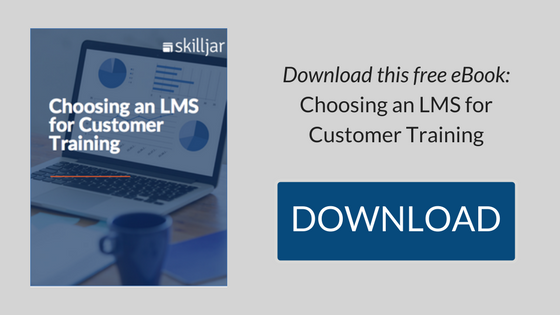 In choosing an LMS, an important first decision is whether to build it yourself or to buy it from a vendor. In this blog post, we make the case for each.
In choosing an LMS, an important first decision is whether to build it yourself or to buy it from a vendor. In this blog post, we make the case for each.
The Case for Building an LMS
- Customized experience - When building an LMS, you can have it tailor made to your requirements. This is important in scenarios where you want complete control over the feature set and user experience, or have very unique requirements that are difficult to obtain anywhere else.
- Proprietary ownership - Having complete ownership over the LMS code base means you are never subject to vendor-driven changes.
The Case for Buying an LMS
- Support - Buying an LMS from a reputable vendor means you have a resource to rely on for general customer service, support, and questions. In the event of a technical problem, the vendor will be working on your behalf to maintain and restore services.
- Maintenance and Upgrades - If your LMS is based on a multi-tenant SaaS architecture (like Skilljar), you'll automatically and seamlessly receive new features, bug fixes and upgrades. You'll be "future-proofing" your LMS by having access to the latest and greatest features, whether that is mobile-responsive design or new functionality. Even if you don't utilize all of an LMS's features on day one, you might choose to opt-in to additional functionality down the road as your training and certification program grows and matures.
- Time to Market - Selecting an off-the-shelf solution that can be configured and implemented quickly can save months or even years compared to a custom design and build. Getting your LMS to market quickly means your organization can rapidly test and iterate on content, business models, and user experience in an agile way.
- Cost - Most LMS vendors have annual or multi-year agreements. The cost of these licenses is typically dramatically less than the cost of hiring a team to custom-build a solution. Remember to consider the total cost of ownership including software, support, hosting, maintenance, and bandwidth.
- Alignment with Core Competencies- Ultimately, most organizations are not in the business of building or maintaining an LMS. The effort, time, and cost spent building an LMS drains resources from areas where an organization can otherwise double down on its competitive advantages.
Conclusion
Build vs. Buy is a decision that organizations face with many of their software tools and processes. Keep in mind the tradeoffs in customization, ownership, support, maintenance, time to market, cost, and alignment with business priorities when determining your approach.
If you're in the market for an LMS for customer training, check out our eBook:

